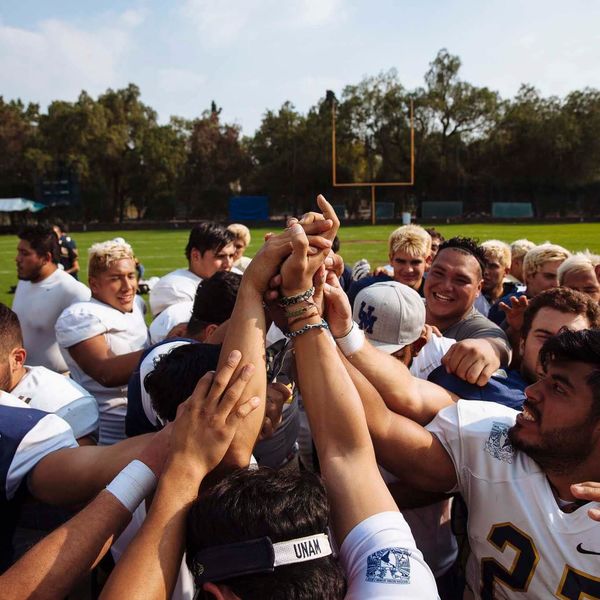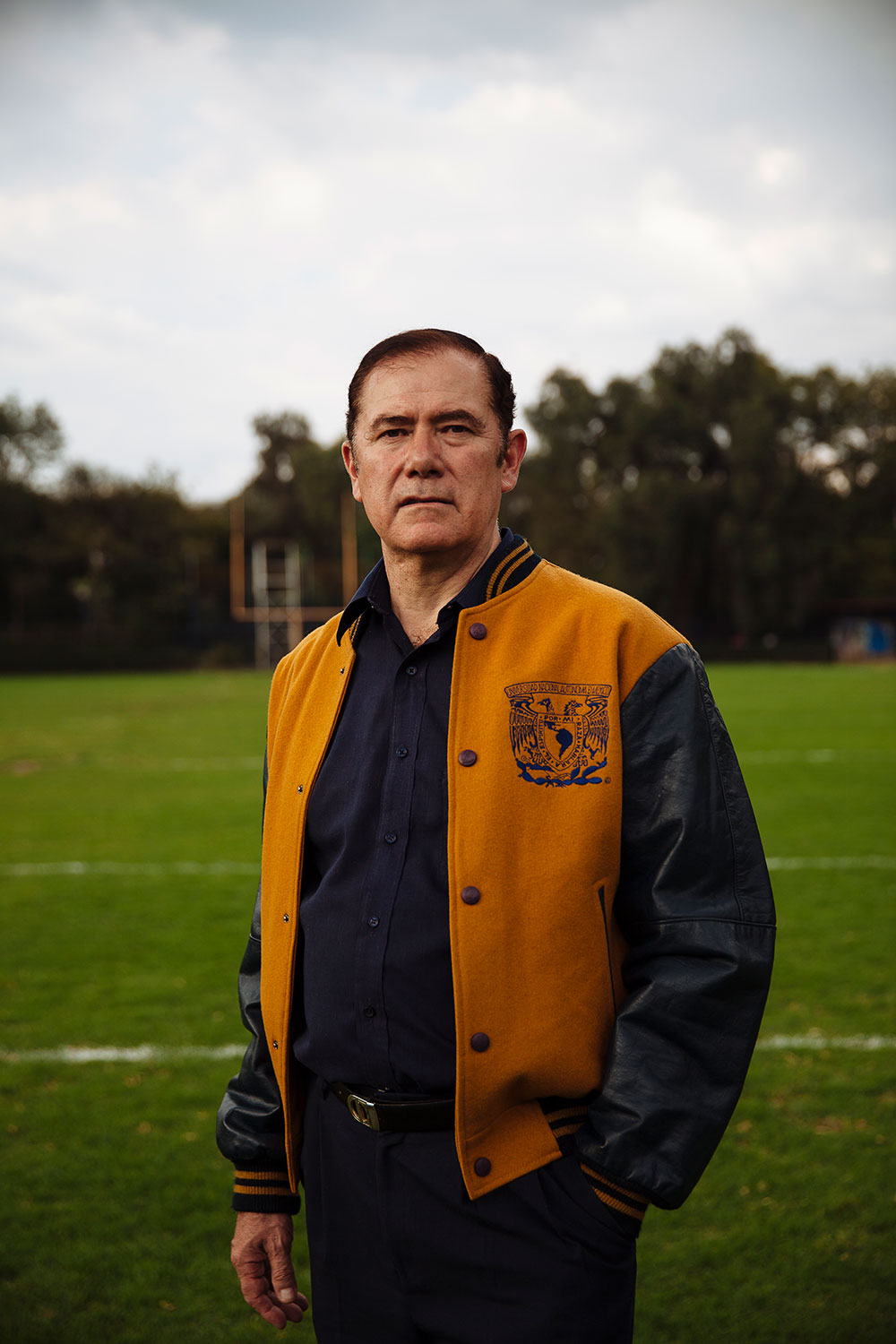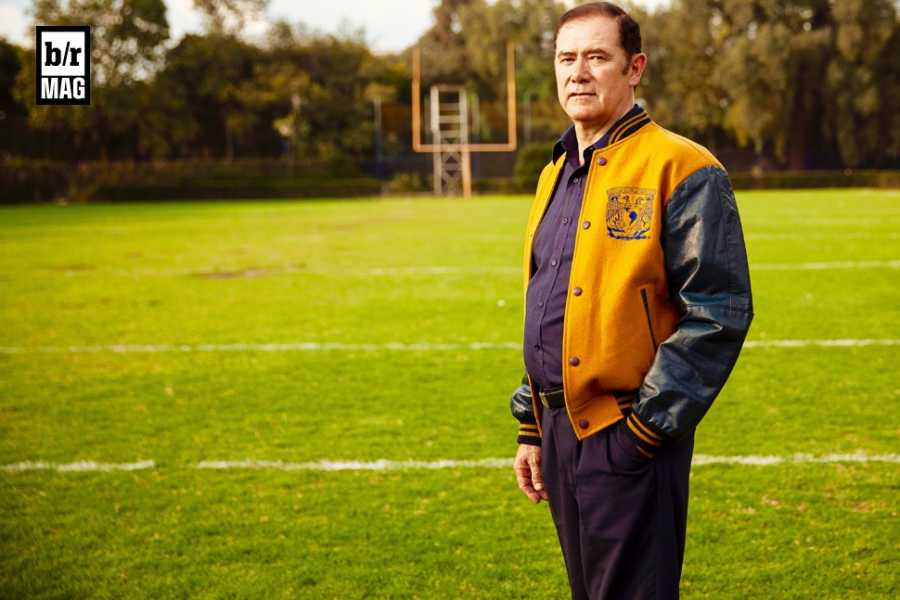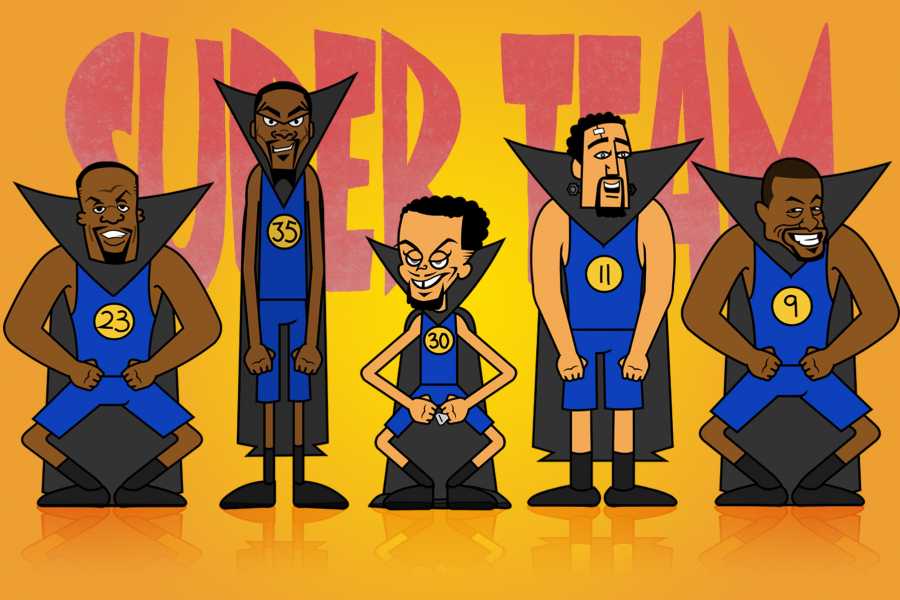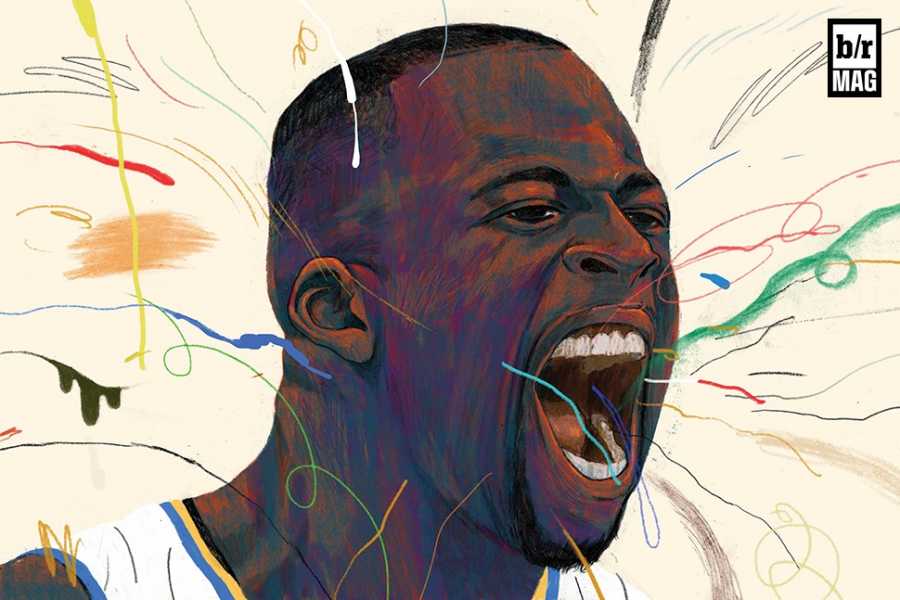Former UNAM football coach Raul Rivera stands in his office. He had been the Pumas coach for the last seven years before stepping down right before this season.
“1968 is a very important year for Mexico,” says Raul Rivera. He was the Pumas head coach for the past seven years, stepping down right before this season. He still keeps an office on the UNAM campus, where I met up with him a few days after the Chihuahua loss. His old team practiced on a grass field nearby. I could hear the new coach critique pass routes and defensive drills. An American pop song reverberated over a set of loudspeakers.
The walls of Rivera’s office hold dozens of framed pictures and Pumas memorabilia. It’s like a very small hall of fame. There’s a shot of Estadio Olimpico on the day it opened. There’s a blown-up national lottery ticket from four years ago, honoring Pumas football on what was the team’s 85th anniversary. There’s a 2014 newspaper article celebrating a Pumas national championship, when Rivera was still the coach. Tucked away in a corner is a framed photo of an actual puma. Rivera considers himself a historian of his former club. I notice that when we talk about Pumas and football, much of what we discuss has nothing to do with tackles or running backs.
“What happened in 1968 is still fresh. Nobody forgets,” he tells me. “There’s a phrase in Mexico, ‘dos de Octubre, no se olvida.’” October second is not forgotten. “I was born in 1974, six years after it happened, and still I know about it, like everyone in the country. It was something traumatic.”
UNAM in the 1960s was the top public college in Mexico, as it still is. Acceptance was and remains extremely competitive, though those sharp enough to get in pay next to nothing in tuition. Several Mexican presidents attended the school, as have future presidents of Guatemala and Costa Rica. Octavio Paz, the Nobel laureate in literature, is an alumnus, as is Carlos Slim, regularly alternating as either the first- or second-richest person alive. Back then, a few generations after the Mexican Revolution, the country was stable and increasingly prosperous. Many families sent their sons and daughters to college for the first time. Those students who made it into UNAM found themselves at the front of a cultural revolution.
“The life of the campus was amazing,” says Diego Garcia Miravete, a student and football player from 1966 to 1971. “There were no big movements before, then suddenly everything was happening at UNAM. It was a privilege to be a part of it.”
"The most traumatic part was the next day. ... Everybody was expecting questions like, 'What happened? Why did they shoot them? Why are there so many dead?' And yet, nothing."
Revolutionary uprisings were erupting all over the world in 1968. That summer, as Mexico prepared to become the first Latin American country to host an Olympic Games, unrest first emerged on the UNAM campus. It started at a football game.
“At the universities, even at the high schools, it’s the students’ sport,’’ Coach Rivera says of football, echoing the words Hector Castro told me at the game. “Soccer is for everybody, but football is most popular with the students.”
Two high school teams affiliated with UNAM and its big rival IPN played each other in late July 1968. After the game, a fight broke out among fans. The fight itself has been described as no particular big deal. The government’s response, though, felt like overkill. Riot police barricaded students inside UNAM’s high school, holding them captive for days. One officer discharged a bazooka, obliterating a door that had been hand-carved in the 18th century.
The UNAM student body rallied against the police aggression. The rector of the university joined the cause, lowering flags to half-mast and referring to the trapped students as political prisoners. The UNAM campus emptied into the streets, marchers shouting “Unete pueblo!” People unite!
Into August, the movement’s leaders found their voice. They demanded the release of political prisoners, the abolition of the riot police and other liberal reforms. When the demands were not met, students chanted insults at President Gustavo Diaz Ordaz, which had never been done; Mexican presidents had always been treated with reverence. Marching into El Zocalo, the capital’s main square and the symbolic center of the country, the students vowed to stay overnight, or stay for a week, if that’s what it took. President Diaz Ordaz responded with tanks, first in the main square, then eventually onto the UNAM campus, which he shut down.

A woman reads the inscription on the memorial in Mexico City to those who died in the Tlatelolco Massacre. (Getty Images)
By October 2, with the Olympics about to start, Diaz Ordaz warned that he had tolerated student criticism, but “todo tiene un limite.” Everything has a limit. Grainy footage of a student rally in the Plaza of the Three Cultures shows young children in the crowd that day, and at least one pet dog. From a third-story terrace in an apartment building that fronts the plaza, students aired their grievances. Armed troops massed in the ruins of the old Aztec city. A military helicopter twirled overhead. When a flare dropped from the helicopter onto the plaza, the crowd scattered in confusion. Then the shots rang out.
It’s still unclear exactly what happened. The general consensus, all these years later, is that the first shots came from snipers planted by the government, and that the bullets were intended to spook the troops on the ground. Those troops fired back, striking one student after another. A low estimate counted maybe 40 dead. Other estimates start at 300 people killed, with the true number possibly much higher. (Remains of massacre victims have been discovered as recently as 2007.) Films show bodies falling onto the plaza’s slate tiles. And then more bodies. And then more bodies still.
“The most traumatic part was the next day,” says Rivera. “The main TV news in Mexico started with an announcement that Mexico is waking up to a sunny day. Nobody said anything! Everybody was expecting questions like, ‘What happened? Why did they shoot them? Why are there so many dead?’ And yet, nothing.”
The massacre at Tlatelolco effectively ended Mexico’s student movement. Ten days later, at Estadio Olimpico, President Diaz Ordaz opened the Summer Games. Volunteers released thousands of doves in a symbolic reference to the Games’ theme, which was peace.
✦ ✦ ✦
The 1968 football season was canceled across Mexico. In 1969 UNAM tried to field a team but other universities declined to play them. A year after that, in 1970, Pumas players were divided into three separate squads, to dilute their talent. The games of those three teams were monitored closely by the government. Garcia Miravete, the former player, tells me rowdy “fans” were planted in the stands to disrupt the games, to steal wallets and purses, to smash stuff and make the stadiums unattractive places to spend an afternoon. Castro, the doctor and Pumas fan, tells me the same thing, as do several histories I’ve read.
“They didn’t want the students to get together, so they tried to disrupt football,” Castro says. “There was still that taboo linked to football, because of what happened in ‘68.”
UNAM football players didn’t unite again as one team until 30 years after the massacre, in 1998.
✦ ✦ ✦

UNAM Pumas football gear lines the wall of the team's training facility.
I visit the Plaza of the Three Cultures on a bright afternoon, a couple of days after the massacre’s 48-year anniversary. Orange flowers arranged in a semicircle dry on the patio’s slate tiles, in front of the memorial. People still rally at the plaza every October 2. Wax from candles placed during the rally has melted into a giant soup and is starting to liquefy again in the direct sun. An entrepreneurial guitarist has stacked a few of his CDs next to the memorial. Between songs, he shares the history of the plaza with a family of tourists from China.
The memorial looks a little beat up; it was built 23 years ago. It’s a stack of stone blocks, straight up like a wall. One top corner looks like it’s been blasted with gunpowder, or perhaps lightning. There’s a stone missing on the back side, where I’m guessing there used to be a bronze plaque. On the front, in raised letters, are the names and ages of some of the confirmed victims of the massacre. Leonardo Perez Gonzalez, 29 anos. Guillermo Rivera Torres, 15 anos. Rosalino Martin Villanueva, with a question mark because his age was never determined.
"There was still that taboo linked to football, because of what happened in '68."
Over on the apartment building, below the terrace where the student leaders spoke, someone’s painted a mural of former President Diaz Ordaz. He’s a caricature in the mural, his horn-rimmed glasses oversized, his ears elephantine. Like a rebel, he wears a bandana around his head imprinted with the words “No se olvidara.” Do not forget. The massacre indeed remains fresh.
Football in Mexico was wounded by the crackdown on the student movement, but it survived. It’s even gaining momentum. I spent a Sunday in a bar near El Zocalo watching Tom Brady thrill a group of Patriots fans. When the game ended and I stepped back onto the street, I found an ice cream shop selling sundaes served in little plastic helmets of the Chargers or Raiders or Broncos. A domestic professional league has started up, with six teams so far, all of them sporting their own cool helmets. And of course, the NFL is coming to the Azteca.
“It’s getting more popular, yeah,” says Arenas, the Pumas quarterback. He hesitates for a second, then looks at me in a way that’s almost bashful. “But it’ll never be as big as soccer.”
